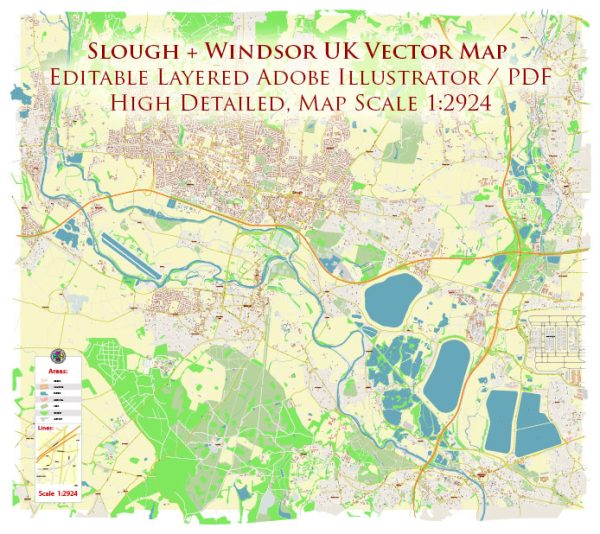The Slough and Windsor area in the United Kingdom has a rich history of urban development that reflects the region’s growth, economic changes, and cultural shifts. Here’s a brief overview:
Early History:
The history of this area dates back to ancient times, with evidence of human habitation from the Bronze Age. However, it was during the medieval period that Windsor gained prominence with the construction of Windsor Castle by William the Conqueror in the 11th century. The castle became a royal residence, and the surrounding area developed to support the needs of the castle and its inhabitants.
Industrial Revolution:
The 19th century brought significant changes with the Industrial Revolution. Slough, initially a small market town, started to transform with the establishment of factories and industries. The opening of the Great Western Railway in the mid-19th century further accelerated industrialization and contributed to the growth of both Slough and Windsor.
20th Century:
In the early 20th century, Slough continued to expand as industries and businesses thrived. The town became a center for manufacturing and attracted companies in various sectors. The growth of the motor industry, particularly the presence of the Slough Trading Estate, played a crucial role in shaping the town’s economy.
Windsor, on the other hand, maintained its historical and royal significance. The 20th century saw the modernization of the town while preserving its cultural heritage. Windsor became a popular tourist destination, attracting visitors from around the world to its iconic castle and charming surroundings.
Post-War Development:
After World War II, both Slough and Windsor experienced post-war reconstruction and redevelopment. Slough, with its strategic location and industrial base, continued to attract businesses, contributing to its urbanization. The post-war period also saw increased suburbanization, with new housing developments and infrastructure projects to accommodate a growing population.
Contemporary Development:
In recent decades, the Slough and Windsor area has seen ongoing urban development and regeneration efforts. The focus has shifted towards creating more sustainable, modern, and livable communities. Redevelopment projects, infrastructure improvements, and efforts to enhance the cultural and recreational aspects of the towns have been underway.
Economic and Technological Changes:
The economy of the region has evolved, with a shift towards service industries and the incorporation of technology and innovation. The Slough Trading Estate remains a key business hub, hosting a mix of traditional and modern enterprises.
Challenges and Future Prospects:
Like many urban areas, Slough and Windsor face challenges such as infrastructure demands, traffic congestion, and the need for sustainable development. However, ongoing efforts by local authorities and community initiatives aim to address these challenges and ensure a prosperous and vibrant future for the region.
In summary, the history of urban development in the Slough and Windsor area reflects a dynamic interplay of historical heritage, industrialization, post-war reconstruction, and contemporary efforts to create sustainable and thriving communities.


 Author: Kirill Shrayber, Ph.D.
Author: Kirill Shrayber, Ph.D.